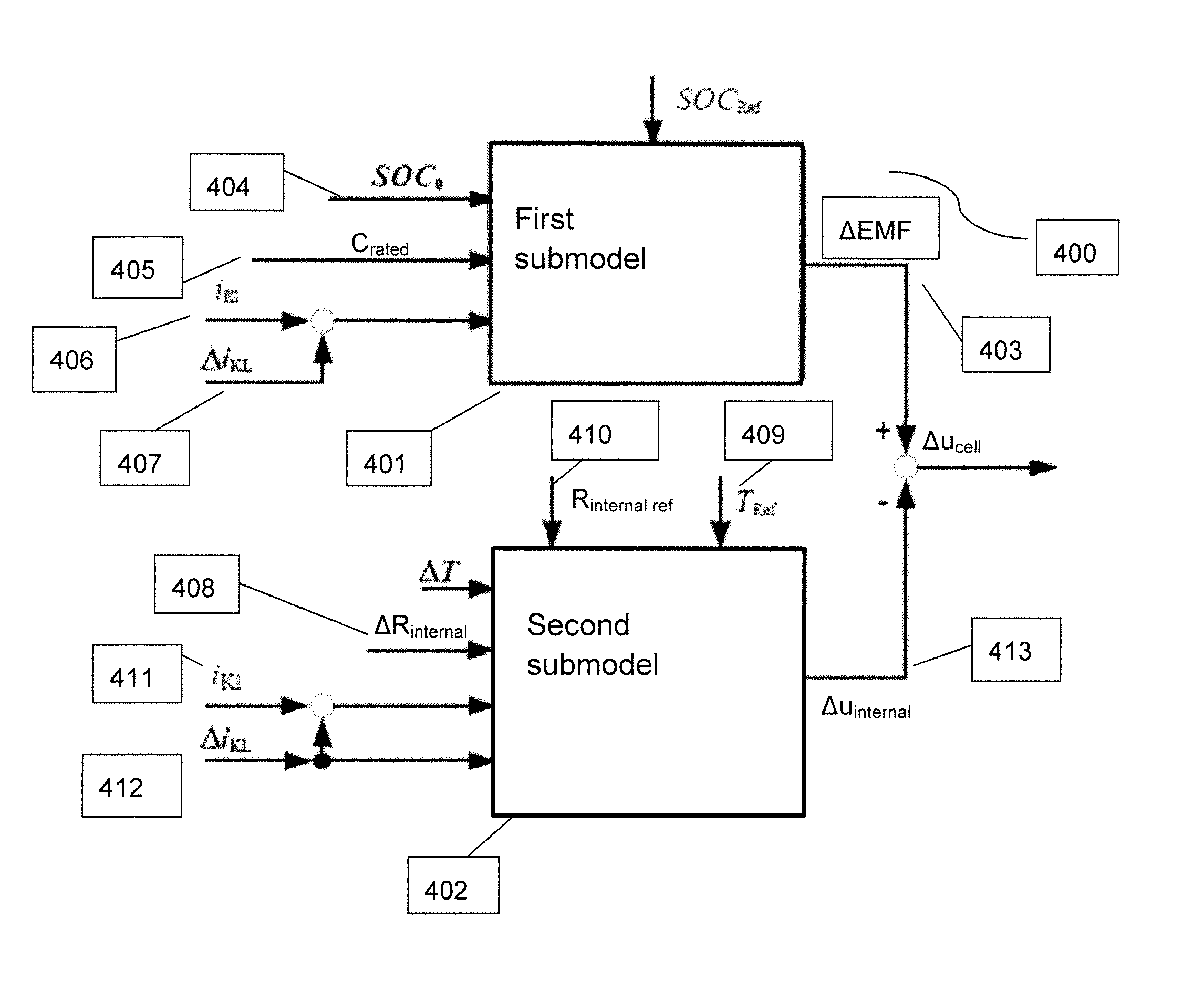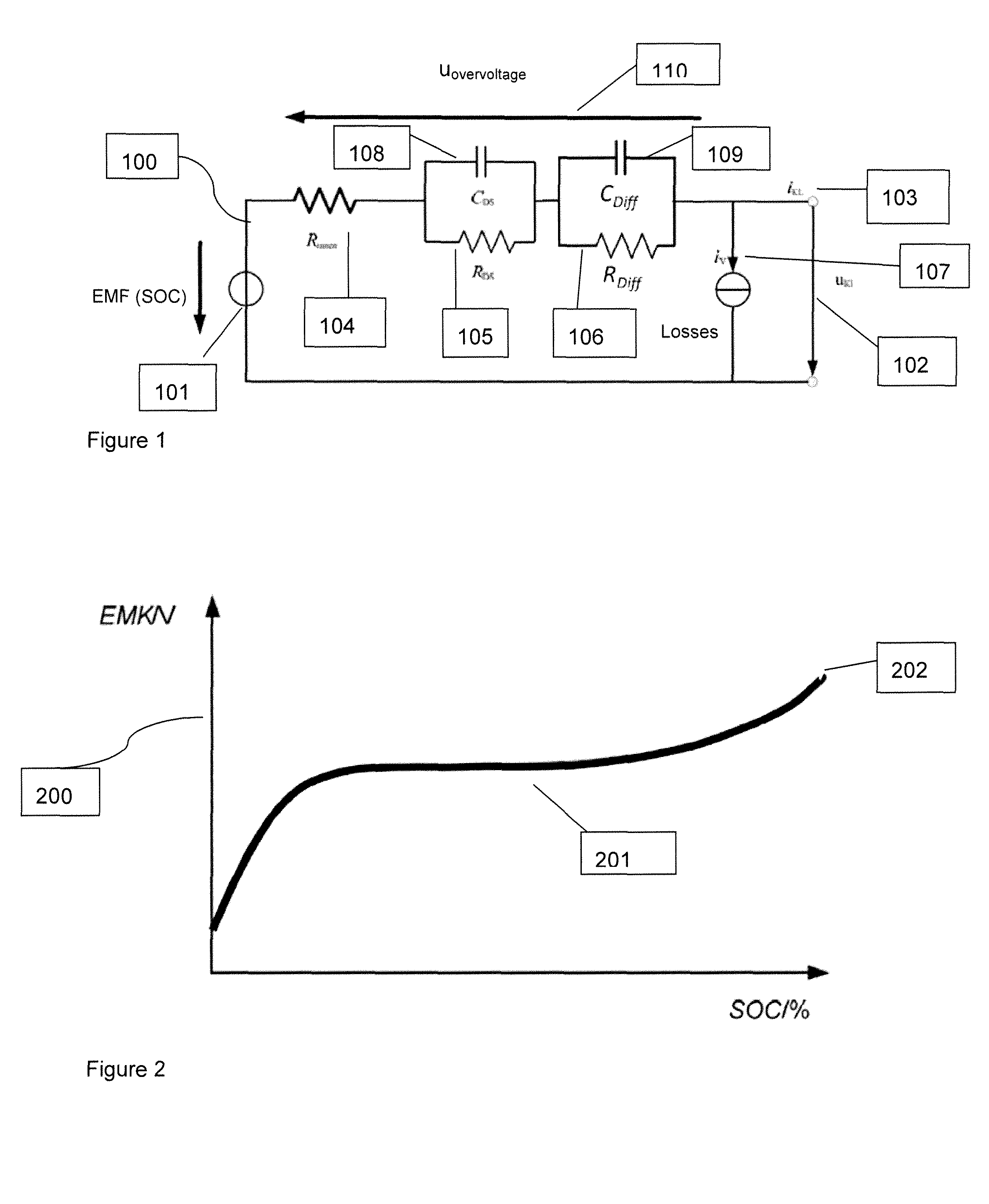Real-time capable battery cell simulation
a battery cell and real-time capability technology, applied in secondary cell testing, complex mathematical operations, analog and hybrid computing, etc., can solve the problems of no longer being real-time capable, no longer being able to meet real-time requirements of models, and no longer being able to handle models, etc., to achieve optimization of storage and computation effort for calculating all relevant variables
- Summary
- Abstract
- Description
- Claims
- Application Information
AI Technical Summary
Benefits of technology
Problems solved by technology
Method used
Image
Examples
Embodiment Construction
[0034]A system and method for real-time simulation of a battery comprising simulating a cell array by means of an overall model on a computer unit is disclosed. The model of the cell array includes a plurality of single cells, a plurality of terminal voltages for the plurality of single cells, a plurality of terminal currents for the plurality of single cells, a total input current and cell parameters or variables for the plurality of single cells. The system and method disclosed further comprises connecting the computer unit via a cell voltage emulator to a control unit test system; calculating the plurality of terminal voltages of the plurality of single cells on the computer unit by using the overall model; and supplying the calculated plurality of terminal voltages of the plurality of single cells to the control unit test system by means of the cell voltage emulator. The overall model comprises a first model wherein a first single cell is modeled by means of the first model as a...
PUM
| Property | Measurement | Unit |
|---|---|---|
| terminal voltages | aaaaa | aaaaa |
| voltage | aaaaa | aaaaa |
| current | aaaaa | aaaaa |
Abstract
Description
Claims
Application Information
 Login to View More
Login to View More - R&D
- Intellectual Property
- Life Sciences
- Materials
- Tech Scout
- Unparalleled Data Quality
- Higher Quality Content
- 60% Fewer Hallucinations
Browse by: Latest US Patents, China's latest patents, Technical Efficacy Thesaurus, Application Domain, Technology Topic, Popular Technical Reports.
© 2025 PatSnap. All rights reserved.Legal|Privacy policy|Modern Slavery Act Transparency Statement|Sitemap|About US| Contact US: help@patsnap.com



